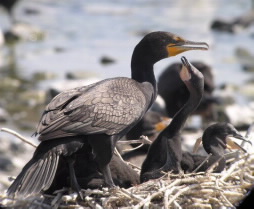EMBARGOED FOR RELEASE | August 28, 2011
New skin test determines age of wild animals to help control nuisance animals
Note to journalists: Please report that this research was presented at a meeting of the American Chemical Society.
DENVER, Aug. 28, 2011 — A new skin test can determine the age of wild animals while they are still alive, providing information needed to control population explosions among nuisance animals, according to a report here today at the 242nd National Meeting & Exposition of the American Chemical Society (ACS).
ACS, the world largest scientific society with more than 163,000 members, is holding the meeting through Thursday at the Colorado Convention Center and downtown hotels. With 7,500 reports on new advances in science and more than 12,000 scientists and others expected in attendance, it will be one of 2011’s largest scientific gatherings.
Randal Stahl, Ph.D., said that the improved method will provide important information about the health and stability of herds, flocks and other populations of wild animals, which lack the established birthdates of prized cattle, horses, and many household pets.
Media Contact
During the meeting, Aug. 25-Sept. 1, the contacts can be reached at: 303-228-8532
Michael Bernstein
202-872-6042
m_bernstein@acs.org
Michael Woods
202-872-6293
m_woods@acs.org
“Determining the age of wild animals is important for a number of reasons,” Stahl explained. “We are in the midst of population explosions of some animals that have negative impacts on people, property and other animals. Wildlife management programs have been established to cope with the situation. Some of these programs, for instance, seek to maintain healthy numbers of breeding pairs. The new skin test will help us tell how many animals in a wild population are of breeding age.”
Stahl is a scientist with the National Wildlife Research Center (NWRC) in Fort Collins, CO. The center is the research arm of the U.S. Department of Agriculture, Animal and Plant Health Inspection Service, Wildlife Services program.
The test detects pentosidine, a biomarker for so-called advanced glycation end products (AGEs), substances that form in the body as a result of aging; the amounts can indicate an animal’s age. Those substances also form in humans, and have been linked to a range of chronic disorders, including type 2 diabetes, cancer and Alzheimer’s disease.
Tests for AGEs already exist and have been used in both animals and humans. At the ACS meeting, Stahl and colleagues described development of a more sensitive version of the animal test. That test involves taking a biopsy, or sample, of the animal’s skin. In the past, scientists needed such a large skin sample — about the size of a postage stamp — that scientists usually could do the test only on dead animals. The new version of the test requires a skin sample only the size of a pea.
“We improved the sensitivity of the pentosidine test so we can detect very small amounts of it,” Stahl said. “The advance will enable scientists to capture a few individuals, take a small skin sample without harming the animal and then release it back into the wild. With this approach, we can sample a population repeatedly over time without having an effect on the size of the population.”
Stahl’s group is currently studying double-crested cormorants, large fish-eating birds that have become a nuisance due to population explosions. Federal and state agencies in the Great Lakes region, and other areas, are trying to manage cormorant populations to reduce the birds’ adverse impacts on vegetation, other water birds, private property, fish farming, sports fishing and risks of collisions with aircraft. Those efforts involve maintaining the number of breeding pairs of cormorants at environmentally healthy levels. And the new skin test will enable scientists to gauge the number of birds that are of breeding age.
Collaborating with the NWRC field station in Mississippi, the researchers also developed a technique of handling cormorants to obtain samples with little harm to the birds. They place a small hollow metal cylinder called a biopsy punch on the bird’s skin to remove the sample and then put an adhesive on the wound to prevent infection and promote healing, just like a Band-Aid. No anesthesia is needed.
Stahl plans to use the skin analysis method to study other wild populations, such as invasive species of snakes and lizards in Florida. And because of recent coyote attacks on humans in populated areas, such as the suburbs of New York City and in California, Stahl’s team also will use the method to determine the demographics of these urban coyote populations during management activities.
###

determine the ages of cormorants and other
wild animals


